Thatch ants are well-known for making mounds from pine, leaves, grass stems, or small sticks. These red and black insects benefit the world’s ecosystem because they fiercely prey on other insects. Nonetheless, thatching ants can be a nuisance when they infiltrate your home or other properties.
One effective control method to eliminate thatching ants is by applying ant baits, though it may take a few days to take effect. Other options include using liquid or powder pesticides. Natural remedies such as trimming backyard tree branches regularly, caulking crevices and cracks, and applying different ant repellents can also prove useful.
To avoid potential problems, acting promptly whenever a thatch ant is spotted around the home is best. Consider utilizing one or more of the aforementioned methods to prevent inconvenience or harm.
What Are Thatching Ants?
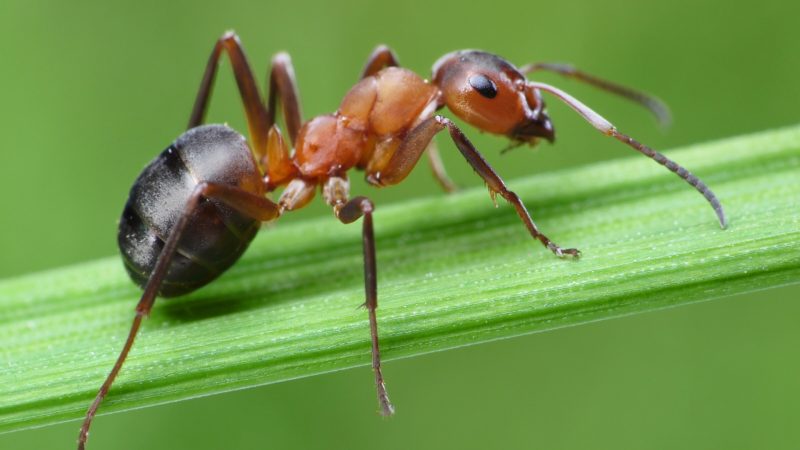
Thatching ants (Formica obscuripes) are large ant species (0.157 to 0.3149 inches or 4-8 mm long) that build mounds or so-called thatched nests. Hatching ants are native to North America, they can build their nests pretty big, and their average colony size is around 40000 worker ants.
What Do They Eat?
These ants feed on sugary substances. Thus when they invade your home, they often look for sugary foods. Besides, they eat insects such as dead moths, small beetles, and caterpillars.
The Difference Between Thatching Ants and Carpenter Ants
It is very easy to confuse thatching ants and carpenter ants. The easiest way to differentiate them is to view them from their sides. As you do so, focus your attention to see the appearance of the top part of the thorax. Carpenter ants have a smooth and rounded thorax, while thatch ants’ thorax has a dip or notch.
How to Get Rid of Thatch Ants: Methods and Instructions
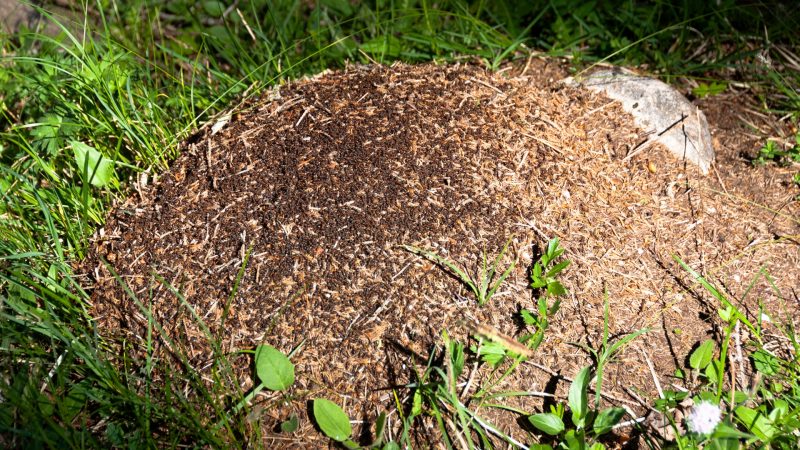
Step 1: Find and Destroy Thatch Ants’ Nests
Finding the nests of thatch ants can be difficult if only a few of these insects are spotted around in your house. However, knowing their likely hideouts can ease this process. For instance, they usually form their nests in decayed logs. Besides, thatch ants create mounds from grass stems, small sticks, pine, leaves, and fir needles.
After you find the nest, you should destroy it completely if you determine that they behave as pests (in some cases, they benefit the environment). To destroy their nest, it is recommendable to use pesticides to kill these insects and prevent them from migrating.
Step 2: Apply Pesticides
1. Ant Baits
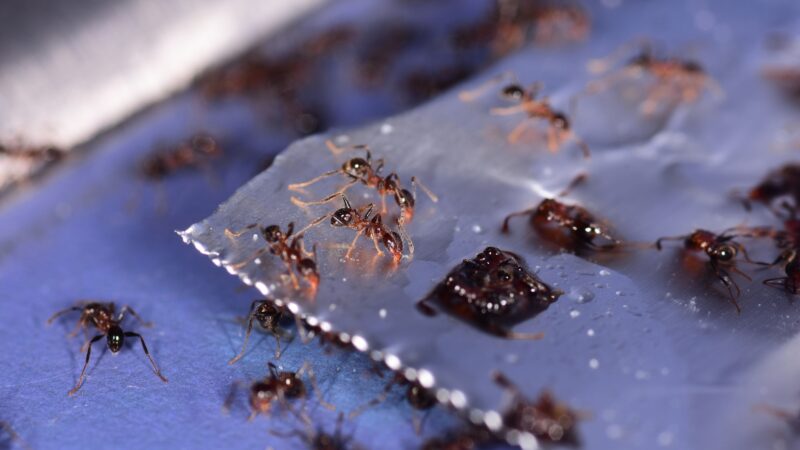
The best way to get rid of thatching ants is by using ant baits that contain hydramethylnon or boric acid. You must ensure that you have repeatedly applied baits to eliminate these insects effectively.
Each time you spot a thatched ant, it is an indication that many others are residing near your house. Those that you see are typically the scout ants. They are searching for food that they will eventually take back to the colony. You can use the scout ants to trace the nest and thus get rid of the whole colony.
It is worth noting that the tastes of thatching ants keep changing throughout the year. Most thatch ants prefer fatty, sweet foods during summer and protein in spring. So set out different baits to determine which will attract these ants.
The scout ants in hunting food for the colony, will find the bait and take it to the colony. Since it contains the taste preferred by the thatched ants, they will consume the bait (including the queen), and the whole colony will die. The following are one of the best ant killer baits.
- ATTRACTS & KILLS: Effectively targets and eliminates common...
- KILLS THE ANTS YOU DON'T SEE: Terro ant bait is designed to share...
- FAST-ACTING: Noticeable ant activity reduction within days as...
- READY TO USE: Simply place ant baits indoors with no setup...
- VERSATILE HOME PLACEMENT: Ideal for use as terro ant traps along...
- One 8 count package of Raid Ant Killer Baits protects against...
- Raid Ant Killer works for up to 3 months to help control ants in...
- This pest killer comes in convenient Raid Ant Traps where ants...
- Raid Ant Killer is ideal for use throughout your home, including...
- Try other Raid bug spray and insect killer products for all of...
- EFFECTIVE ANT ELIMINATION: Terro outdoor liquid ant baits attract...
- COLONY CONTROL: Worker ants carry Terro ant bait back to the...
- FAST-ACTING RESULTS: With the use of Terro ant killer, experience...
- SIMPLE SETUP: Terro outdoor ant bait is easy to use with insert...
- OUTDOOR PROTECTION: Place Terro ant bait stations outdoors to...
2. Other Pesticides
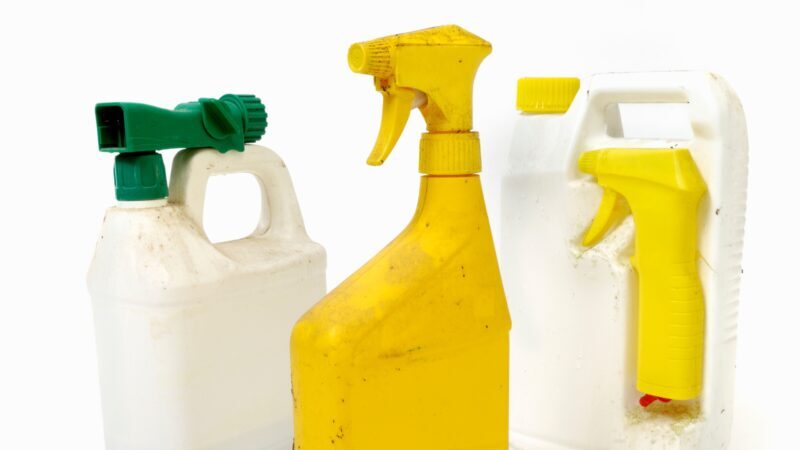
Thatch nests can also be eliminated using pesticides such as pyrethroids, pyrethrin, and boric acid. These pesticides should be applied to nests or crevices and cracks that the insects use as access points. When spraying the nest, you can use multiple chemicals to quickly eliminate thatching ants and prevent them from relocating.
Most people opt for organic options, while others prefer using strong pesticides. Using either of these options is a good move as long as it is effective. You should make sure to saturate the mound completely. If you treat the top layer only, the pesticide will not be effective because only the ants on the top area will be killed. You should know that the queen usually resides in the mound two to three feet underground.
The queen will continue to live and reproduce if the mound is not well-saturated with a pesticide. This will make it more difficult to get rid of the thatch ants. To ensure that the mound is properly saturated, it is recommended that you mix the pesticide with water. You can also hose down the mound before spraying it with the pesticide. This will help with saturating it.
3. Spot Treatment – Please Read
You can also eliminate the thatching ants using spot treatment on their nests. This should be done using a residual insecticide already registered for controlling ants. You do not need to spray residual insecticides on a large surface. You just need to focus on the entry spots of their nests.
Note: It is worth noting that groundwater may be contaminated when the earth is saturated with pesticides. So it is vital to be cautious when using pesticides.
Step 3: Trim Backyard Tree Branches Regularly
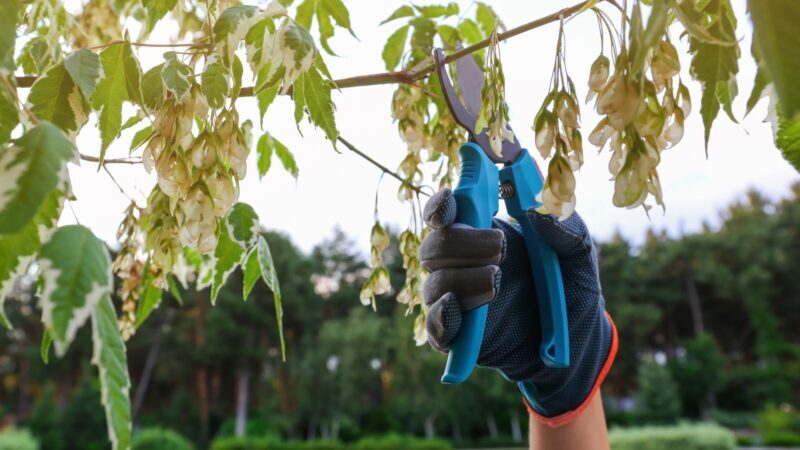
Trees next to your house offer a shade that produces a cooling effect for the thatching ants. Fruit trees such as pears and figs offer shade and provide food for them.
While backyard trees may have several benefits, they can be a haven for ants. You might wonder how ants find their way into your home, yet you don’t find them wandering around your front door. If you spot thatch ants in your home, they could access your house through tree branches touching your roof.
So trimming these branches is a great way to get rid of the thatch ants. Ensure that you trim your backyard trees regularly. Besides, ensure to undertake lawn care maintenance often. In doing so, you will not only prevent ants from invading your home but will also keep your surroundings beautiful.
Step 4: Caulk Crevices and Cracks

Thatch ants are particularly industrious in discovering entry points such as crevices and cracks around foundations, walls, windows, and doors. Identify all these openings that offer access from outside. Then block all these routes using silicone-based caulk or other types of caulk.
Almost all ants like to make trails along pipes, wires, and other structural elements. Mostly, they use these elements to enter a house. So examine locations where pipes or other elements enter your house and caulk identified entry points.
Step 5: Remove Ant Trails
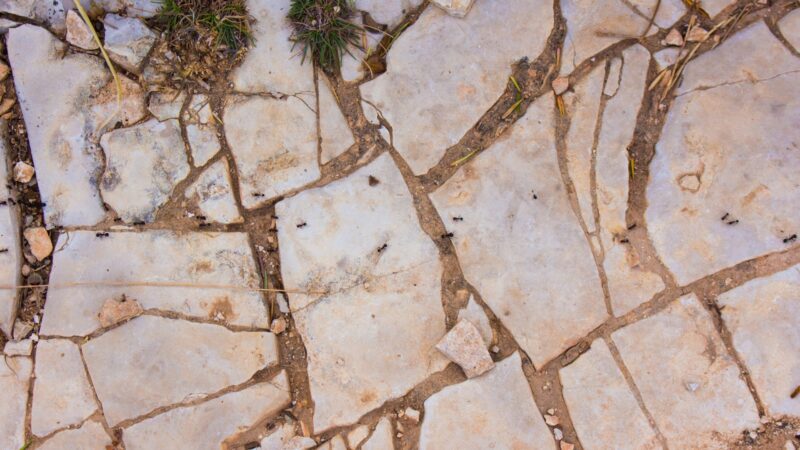
Thatch ants leave behind a scented trail that helps other ants from their colony to find your house. You can get rid of these trails to eliminate these insects. Mix vinegar with water and spray the mixture around your home to prevent outdoor ants from entering your house. This will prevent outdoor ants from accessing your home.
Then, use insecticides or another method to eliminate the indoor ants.
What If None of These Works? | Hire a Skilled Exterminator

If none of these methods work, it’s time to call an exterminator. Hiring an experienced exterminator is probably the most expensive option. However, it is highly effective and increases safety during the thatching ant treatment process.
A skilled exterminator will quickly discover the origin of a thatch ant infestation. Usually, these professionals use a combination of methods. With their skills and tools, they can deal with any ant infestation in one day (the number of days depends on the severity of the ant infestation).
Related: Ant Exterminator Cost | Ant Treatment Price Guide
Sometimes, thatch ants can be hard to get rid of. So after using any of these control methods, monitor your house and the surroundings to see any signs of them regrouping and rebuilding their colony.
After applying pesticides to their mounds, it is recommended that you monitor them for the next 3 to 5 days. In cases where the queen survives, they might rebuild and form a new mound in another place near your home. So watch out for new mounds and treat them accordingly. Best of luck!
List of Sources
Formica obscuripes, ITIS
Miner A., Formica Obscuripes, Western Thatching Ant, University of Michigan
Thatching Ants, Washington State University
Western Thatch Ant (Family Formicidae), University of Wisconsin-Milwaukee
Western Thatching Ant, Idaho Species, Department of Fish and Game
- How to Get Rid of Copperheads | Practical Guide - August 27, 2023
- How to Get Rid of Corn Snakes | What Makes Them Aggressive? - August 27, 2023
- How to Get Rid of Alligators | Safety Measures and Removal Methods - July 16, 2023



